Tucked between Sicily and Tunisia, there’s this hidden gem I’ve been dying to tell other travelers about. Pantelleria, known as “The Black Pearl of the Mediterranean,” sits just 45 miles east of Tunisia and 60 miles south of Sicily, so you really feel that mix of European and African vibes.
This volcanic island gives you a travel experience like nowhere else—think dramatic black landscapes, green hills topped by Montagna Grande, and a culture that’s this wild blend of Italian and Arabic.
When I visited Pantelleria, the place immediately felt different from the usual Mediterranean spots. Its remote location has kept its authentic character intact, so you mostly bump into Italian vacationers, not international crowds.
I wandered through old Arabic buildings and along the rugged coastline. It made sense why some people fall in love here, while others might find it a bit too wild—Pantelleria’s beauty really asks you to work for it.
What stands out most about Pantelleria is its character. The local food is fantastic, and the Donnafugata Winery, tucked away in the hills, is just one of those things you can’t find anywhere else.
I spent days climbing the central mountain, tasting wines from zibibbo grapes, and finding these quiet coves where the deep blue sea crashes against black volcanic rocks.

Pantelleria’s Unique Geography and Landscape
Pantelleria hangs between two worlds, floating in the Mediterranean between Europe and Africa. This volcanic island, about 60 miles southwest of Sicily and 40 miles east of Tunisia, has a landscape shaped by ancient eruptions.
Volcanic Origins and the Black Pearl Moniker
Locals call it “The Black Pearl of the Mediterranean” because of the dark volcanic rock that sparkles in the sun. I couldn’t help but notice how the black obsidian stones scattered everywhere catch the light and make the whole place feel a bit otherworldly.
Volcanic eruptions thousands of years ago formed Pantelleria. The last big eruption happened in 1891, but you can still spot hot springs and fumaroles showing off the island’s volcanic roots.
As I explored the island’s center, I saw how the black volcanic rock takes over everything. Even the buildings use this stone, so the houses just blend right into the landscape.
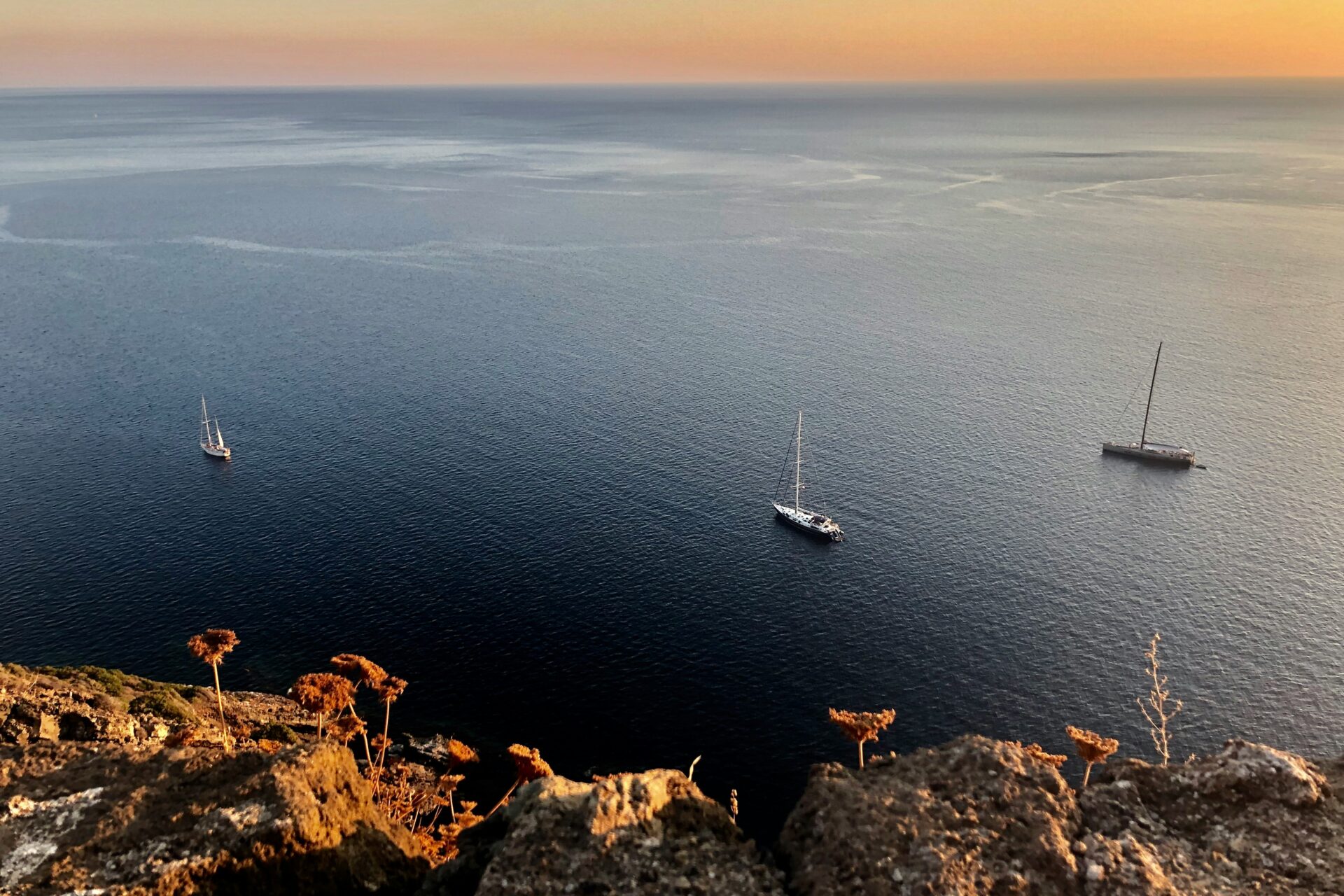
Dramatic Cliffs and Rugged Coastline
The coastline here blew me away. Sheer cliffs drop straight into the blue Mediterranean, and the contrast between the dark rocks and the sea is just stunning.
Pantelleria doesn’t really do sandy beaches. Instead, you’ll find rocky coves and natural stone arches shaped by centuries of waves.
Locals and visitors love diving off these cliffs into the clear water. The island’s isolation has kept the shoreline wild and free from overdevelopment.
Sea caves line the coast, but you have to take a boat to see them. I joined a boat tour and we slipped into these hidden grottoes, checking out the crazy rock formations.
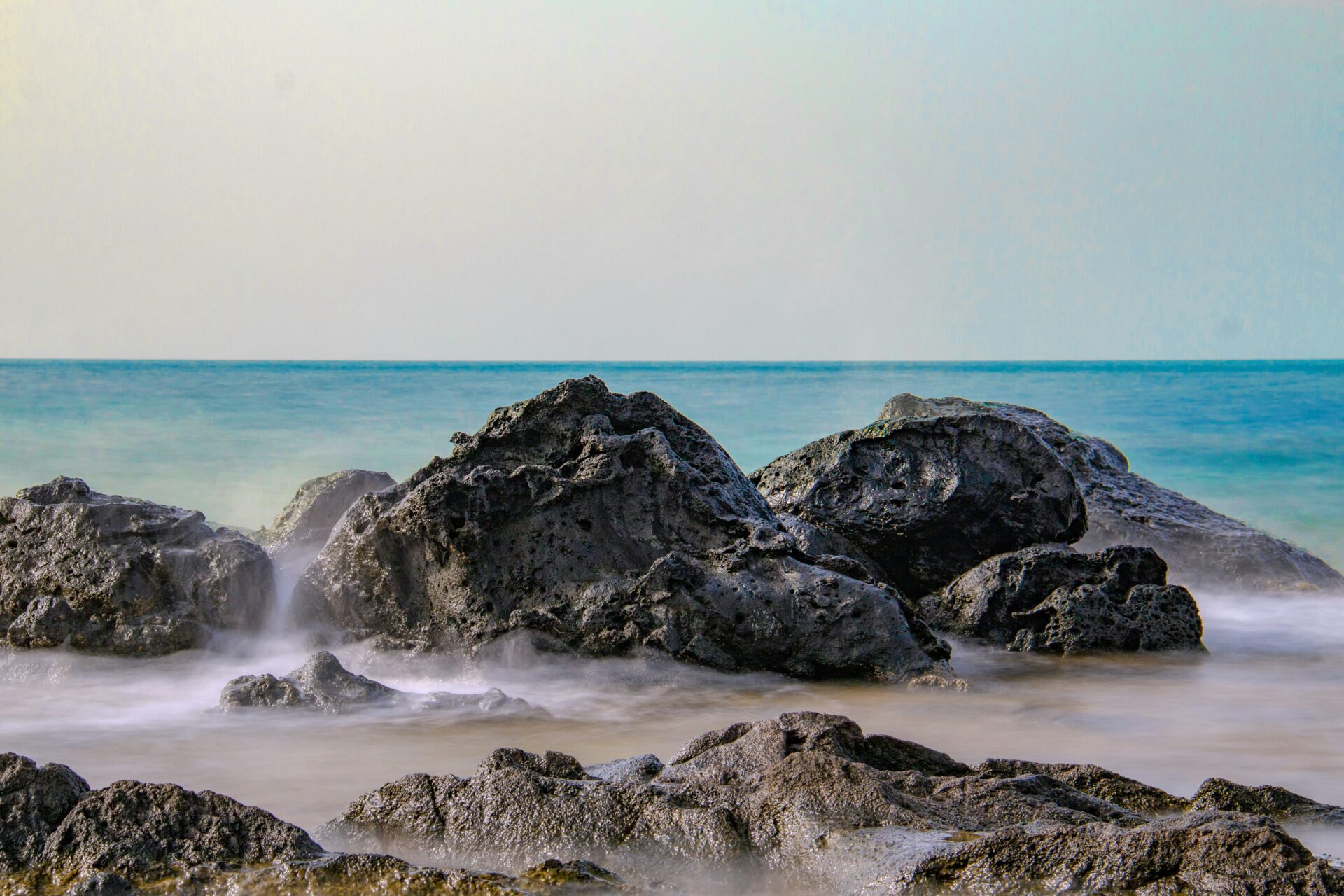
The Rich Soil and Volcanic Landscape
Pantelleria might look harsh, but the soil is crazy fertile. The volcanic earth is perfect for growing capers and the famous Zibibbo grapes.
I found the terraced vineyards climbing up the hills fascinating. Local farmers have come up with clever ways to work with this tricky landscape.
The island’s interior shows off a patchwork of farms and vineyards, all separated by old stone walls. These “dammusi” walls both mark property and shield crops from the relentless wind.
The rich soil also feeds olive groves that make oil with a flavor you won’t forget. Walking among those ancient trees, some older than you’d guess, I felt a real connection to the island’s farming roots.
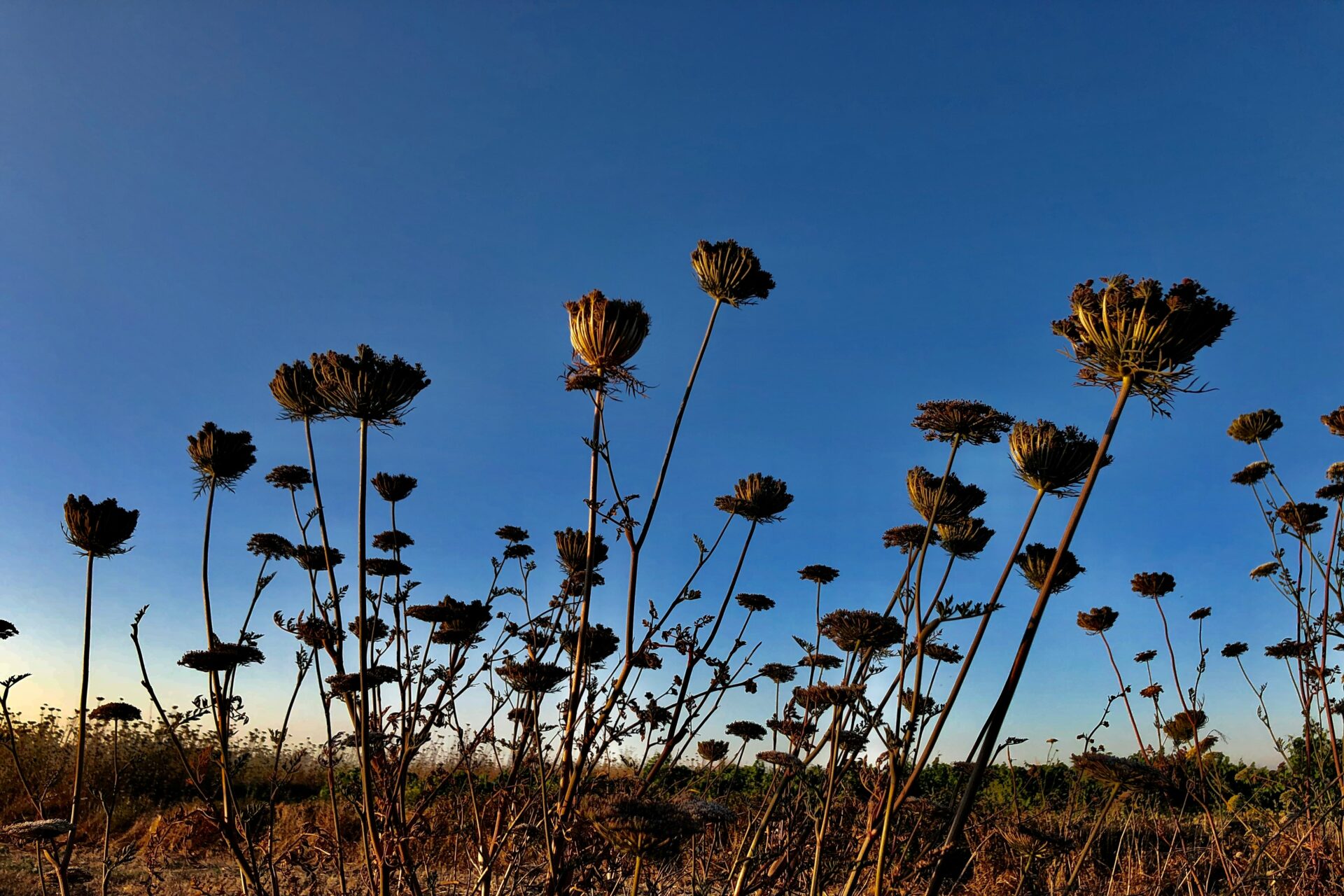
Natural Wonders: Lago di Venere, Favare, and Mirror of Venus
Lago di Venere (Venus Lake), sometimes called the Mirror of Venus, is the showstopper here. This heart-shaped volcanic lake sits in a caldera and on calm days, it mirrors the sky perfectly.
The lake has natural hot springs and mud baths. I joined locals in slathering on the mineral-rich mud—a spa day, island style, and my skin never felt softer.
You’ll also find “favare,” which are steam vents where volcanic gases escape. Early in the morning, these spots look almost magical.
Near the lake, you can try a natural sauna called “Bagno Asciutto” (dry bath). I sat in one of these cave-like places and felt the volcanic heat soak right into my muscles.

Cultural Heritage and History
Pantelleria’s cultural tapestry tells the story of countless civilizations. The island stands at a crossroads between continents, and you can really sense the blend of European and North African influences that shaped it over thousands of years.
A Bridge Between Sicily and Tunisia
Pantelleria’s spot between Sicily and Tunisia—just 60 miles south of Sicily and 45 miles east of Tunisia—made it a natural pit stop for ancient sailors.
Over the centuries, everyone from the Phoenicians and Carthaginians to the Romans, Byzantines, Arabs, and Italians took turns ruling this black pearl.
Each group left its stamp. Walking through the island’s interior, I saw how the architecture, food, and even farming methods reflect this mixed heritage.
Even the local dialect borrows from Arabic, Italian, and Sicilian. It’s like the language itself is a bridge between continents.

Legends of the Nymph Calypso and Ancient Roots
Mythology is everywhere here. Some say Pantelleria is Ogygia from Homer’s Odyssey, where the nymph Calypso kept Odysseus for seven years.
Lago di Venere (Venus Lake) is especially enchanting and tied to these old legends. Supposedly, the goddess of love used the lake as her mirror before meeting her lovers.
Archaeologists have found signs of humans here since the Neolithic era. Bronze Age settlements, stone tools, and pottery show just how deep the island’s roots go.
Punic tombs and Roman ruins still dot the landscape. You can even see the remains of thermal baths that used the island’s hot springs. These ruins remind you that Pantelleria has always been important.

The Arabic Name and Island Influences
Pantelleria’s name comes from the Arabic “Bent el Riah,” meaning “daughter of the wind.” It fits—the island is definitely windswept. The Arabs ruled from about 700 to 1100 CE and left a big mark.
You see Arab influences everywhere. Traditional farming, especially the way they grow capers and zibibbo grapes, traces back to Arab techniques.
The food here has a North African twist. Dishes like cous cous and insalata pantesca really highlight the mix of flavors.
Those old agricultural tricks, like terracing and water-saving methods, still help farmers get by, even with the island’s limited fresh water.

UNESCO Recognition and Dammusi Stone Dwellings
UNESCO honored Pantelleria’s old-school farming in 2014, especially the way locals grow bush vines, calling it an Intangible Cultural Heritage of Humanity.
The dammuso is the island’s most iconic building—a traditional stone house with thick walls and domed roofs. These homes collect rainwater and stay cool, even in the blazing Mediterranean sun.
Each dammuso uses a clever system of roof channels to funnel rain into underground cisterns. This design has kept people going on this dry volcanic island for centuries.
Inside, dammusi stay surprisingly cool in summer. The thick lava stone walls act as insulation, and the tiny windows keep the heat out. Many have been lovingly restored as vacation homes, so you can actually stay in one and get a real feel for the place.

Outdoor Activities and Nature Exploration
Pantelleria’s wild landscape is a dream for anyone who loves adventure. The volcanic terrain, clear waters, and Mediterranean weather make it perfect for outdoor fun all year round.
Swimming in Crystal-Clear Waters
The waters around Pantelleria are some of the clearest I’ve ever seen in the Mediterranean. Forget sandy beaches—here, it’s all about rocky coves where the deep blue sea meets volcanic shore.
My top swimming spot has to be Balata dei Turchi. I dove into water so clear I could watch fish darting between rocks far below. The thermal springs at Gadir let you soak in warm pools right by the sea, which feels downright magical at sunset.
Families will like the calm waters at Cala Tramontana, while adventure junkies might head for the remote coves near Punta Spadillo. There aren’t any beach clubs or fancy facilities—Pantelleria’s beauty is all about its untouched, natural swimming holes.
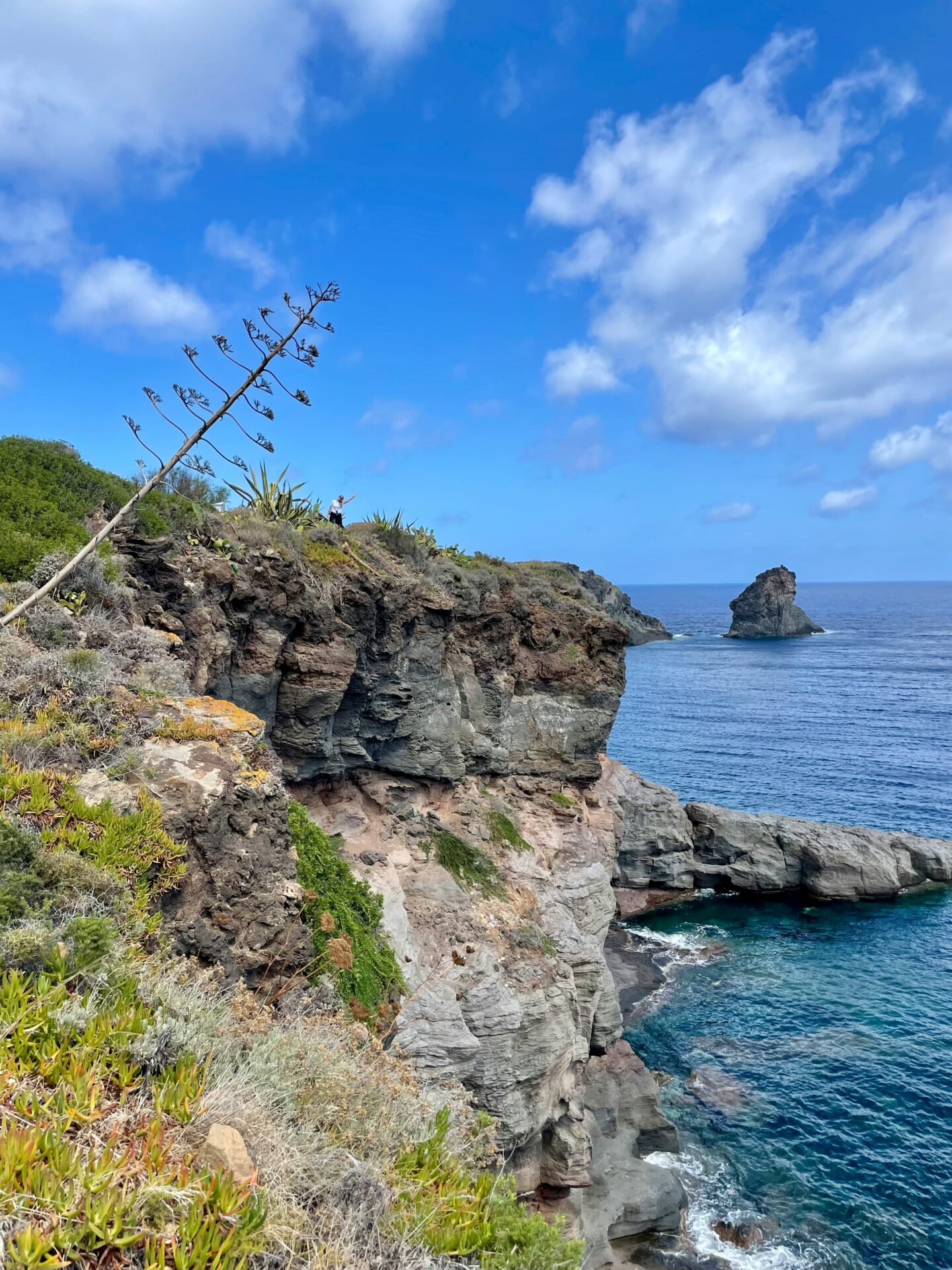
Hiking Through Terraced Vineyards and Volcanic Trails
Walking around Pantelleria feels like stepping into another world. The hiking trails run from easy walks through vineyards to tough climbs up volcanic hills.
One morning, I wandered the terraced vineyards of Coste Ghirlanda, where ancient zibibbo vines grow in shallow pits designed to catch dew. Farmers have been perfecting this for thousands of years, and it shows.
For a real challenge, I hiked up Montagna Grande, the island’s highest point at 836 meters. The view from the top stretches all the way to Tunisia on a clear day. The volcanic terrain is full of strange rock shapes, Mediterranean plants, and all sorts of wildlife.
Local guides can take you to secret paths leading to the Favare—those natural steam vents where you can literally feel the island’s volcanic heart beating under your feet.

Diving, Cycling, and Adventurous Sports
Under Pantelleria’s waters, there’s a whole other world. I dove into caves near Punta Spadillo, where sunlight turns the water a surreal blue.
The marine life here is thriving. On my dive, I spotted groupers, bright wrasses, and even dolphins way off in the distance. Dive shops rent gear and offer trips for all levels.
Cycling fans will love the tough terrain. I rented a mountain bike and rode through old lava fields and along drystone walls. The coastal roads give you epic sea views, but be ready for some tough climbs!
Wind and kitesurfing are big here in the summer, thanks to steady breezes. If you want something different, try snorkeling at the underwater archaeological site—Roman anchors and amphorae are still scattered across the seabed.

Wellness Retreats and Natural Springs
Pantelleria is a wellness haven, thanks to its natural thermal wonders. The island’s volcanic history means you get healing mud baths and hot springs that attract anyone looking to relax or heal.
Steamy Mud Baths and Natural Hot Springs
Pantelleria’s volcanic energy has created loads of natural spas. The mud baths are especially cool—full of minerals from the volcanic soil. People have used these natural remedies since ancient times for their healing effects.
As you wander the island, you’ll spot steaming fumaroles where hot vapor escapes the ground. Locals swear by these places for natural steam treatments that help with everything from breathing problems to skin issues.
What really got me was how these natural features just fit into the landscape. There’s no commercial spa vibe—just you, the mud, and the wild beauty of Pantelleria.

Therapeutic Experiences at Gadir
Gadir really stands out as Pantelleria’s crown jewel when it comes to wellness. This small cove on the northern coast has a series of thermal pools, each one warmer as you get closer to the source.
I spent a lazy afternoon at Gadir, following what locals do: first, I slathered on mineral-rich mud, let it bake on my skin in the sun, then rinsed it all off in the warm sea. My skin felt ridiculously soft afterward!
People say the waters at Gadir help with:
- Joint pain and arthritis
- Skin conditions
- Muscle relaxation
- General stress relief
Wellness retreats on the island often include guided visits to Gadir. They usually combine these natural treatments with yoga classes and workshops on the Mediterranean diet.

Mediterranean Climate and Year-Round Appeal
Pantelleria’s climate works perfectly for wellness retreats almost all year long. I visited in early May and honestly, the weather felt just right—warm enough for outdoor adventures but never too hot.
The island gets over 300 sunny days a year. Winters stay mild, and summers get hot but the sea breeze takes the edge off. This means you can plan a wellness trip well beyond the typical summer months.
Fall retreats (think September or October) have their own special vibe. On my autumn trip, I woke up early for peaceful meditation while the island was quiet, then slipped into the still-warm water after yoga.
Yoga and wellness programs really take advantage of the climate. Most offer 7-night all-inclusive retreats in boutique estates tucked between the sea and volcanic hills. Daily yoga, plus trips to natural healing spots, make up the core of these experiences.

Flavors of Pantelleria: Food and Wine Experiences
Pantelleria’s food scene surprised me with its blend of Italian and North African flavors. You just don’t find these tastes anywhere else in the Mediterranean.
Pantelleria Capers and Local Olive Oil
Pantelleria capers? They’re legendary. These tiny flavor bombs grow wild in the island’s volcanic soil, giving them a punchy, aromatic kick that ordinary capers totally lack.
Farmers here still pick capers by hand every summer. I watched locals carefully harvest and cure them in sea salt for weeks. The result? A product that earned IGP (Protected Geographical Indication) status—pretty impressive.
The olive oil deserves its own spotlight. Small producers make rich, peppery oils from trees that somehow survive the island’s harsh winds and dry spells. On my tasting tour, I noticed the volcanic soil gives the oil a unique mineral taste that pairs perfectly with local seafood.

Passito Wine, Moscato, and Zibibbo Grapes
Passito wine is the star of Pantelleria, no question. I fell in love with it during my vineyard visits. This sweet, amber wine comes from Zibibbo grapes—also called Muscat of Alexandria.
The winemaking process is a story in itself. Farmers pick the ripest grapes closest to the trunk, dry them in the sun to concentrate the sugars, then blend those with fresh grapes to make Passito.
Donnafugata Winery runs fantastic tours. They’ll show you the island’s unique head-trained bush vines that grow low to the ground, safe from fierce winds. The old Arab technique, alberello pantesco, even made UNESCO’s heritage list.
During harvest, the whole island seems to revolve around these golden grapes—centuries of winemaking tradition on full display.

Traditional Cuisine and Rainwater Farming
Pantelleria’s food reflects its spot between Sicily and North Africa. I tried insalata pantesca (potato salad with capers, olives, and tomatoes) and couscous al pesce—both dishes show off that cultural blend.
Rainwater farming on the island really caught me off guard. With no springs, locals came up with clever ways to collect and save rainwater for crops.
Traditional stone houses called dammusi have domed roofs that funnel rainwater into underground cisterns. This old practice shaped both the buildings and the farming style.
Restaurants like Al Tramonto serve seafood caught that very morning. For dessert, bacio pantesco—two ricotta-filled pastries—makes the perfect match with a glass of sweet Passito as the sun sinks into the Mediterranean.

Island Life and Tourism Highlights
Pantelleria offers a quirky mix of rustic charm and raw natural beauty. The island’s lifestyle and attractions give travelers experiences you just can’t get anywhere else in the Mediterranean.
Tourism Essentials and Sikelia
When I showed up in Pantelleria, I noticed right away that the island feels untouched by mass tourism. Instead of big resorts, you’ll spot dammusi—those traditional stone houses with domed roofs that stay cool in the summer.
Sikelia is the top pick for places to stay. This luxury retreat, built from old dammusi, blends right into the landscape but still delivers five-star comforts. The infinity pool is stunning, and the food is next-level.
Most visitors come between May and September when it’s warm (75-85°F). I found May especially lovely: fewer people, wildflowers everywhere, and just the right temperature.
Pantelleria doesn’t have sandy beaches, which is probably why it’s still Italy’s best-kept secret.
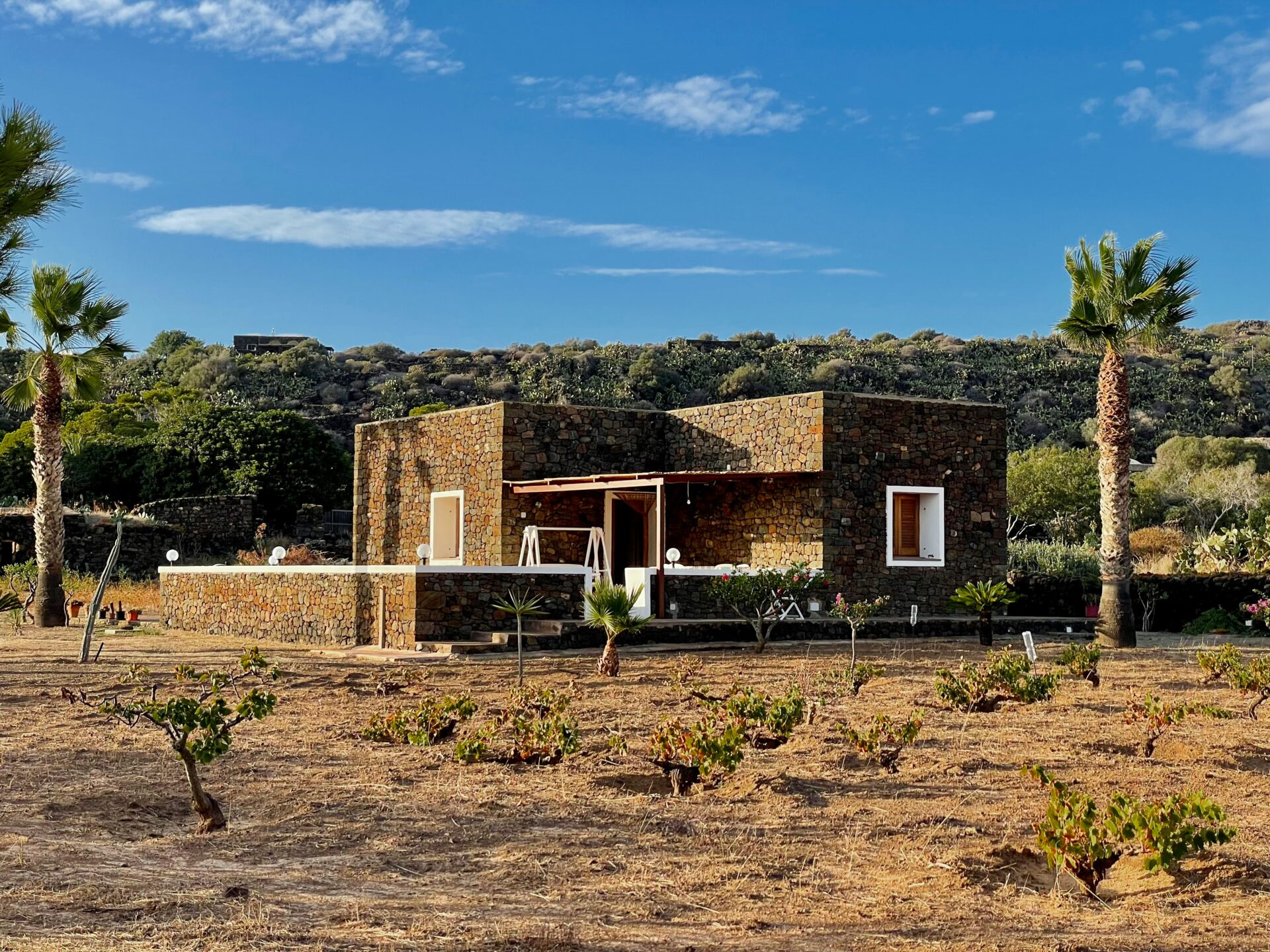
Exploring Cala Levante and Hidden Coves
Cala Levante quickly became my go-to swimming spot. This rocky cove has crystal-clear turquoise water that’s perfect for snorkeling. The black volcanic rocks make the blue sea pop even more.
If you want to see Pantelleria’s coastline properly, here’s what I’d suggest:
- Rent a boat to reach hidden coves you just can’t get to by land
- Check out Balata dei Turchi, with its smooth lava slabs that are perfect for sunbathing
- Take a dip in the hot springs at Lago di Venere—I loved the therapeutic mud baths there
The island’s coastline is wild and rugged, full of natural stone arches and caves. I spent hours swimming through secret grottos that you can only reach from the sea.

Travel Tips for Visiting Pantelleria
Getting to Pantelleria takes a bit of planning. I flew straight from Sicily, but you can also catch flights from mainland Italy if you visit in the summer.
The island’s pretty small—just 32 square miles. Still, you’ll want to rent a car or scooter to really see everything.
Local food is a real treat! I couldn’t stop eating the capers (they say Pantelleria’s are the best anywhere). And if you like wine, try the passito—a sweet dessert wine made from zibibbo grapes dried in the sun.
Here’s some practical advice I wish I’d had:
- Pack water shoes because the beaches are rocky.
- Learn a few basic Italian phrases; hardly anyone speaks English.
- Pack light, but toss in a light jacket. Nights by the sea can get breezy.
People on the island move at their own pace. Restaurants open late, and afternoon siestas happen all the time.
Honestly, just lean into the slow rhythm. That’s how you really get the Pantellerian vibe.

